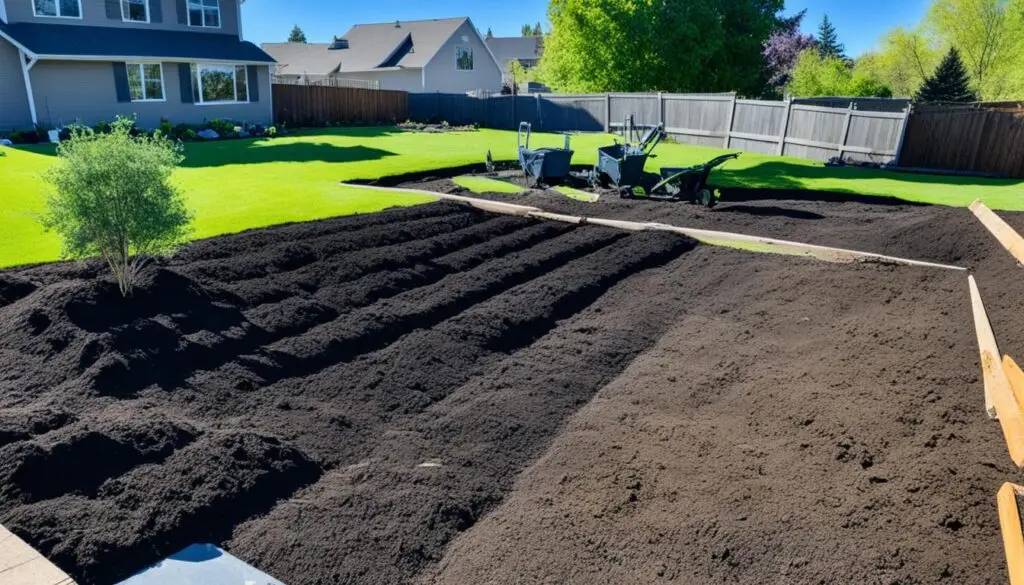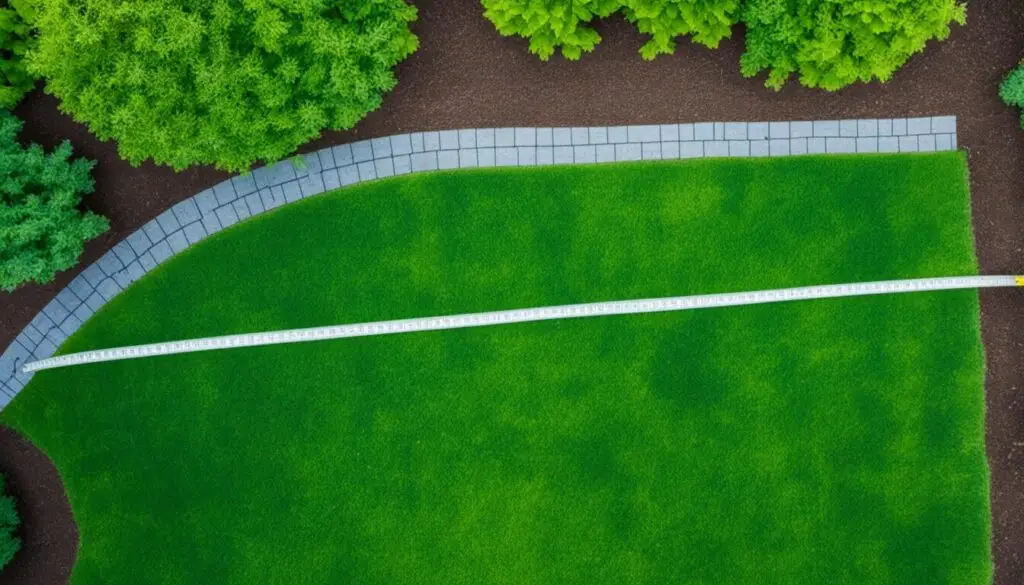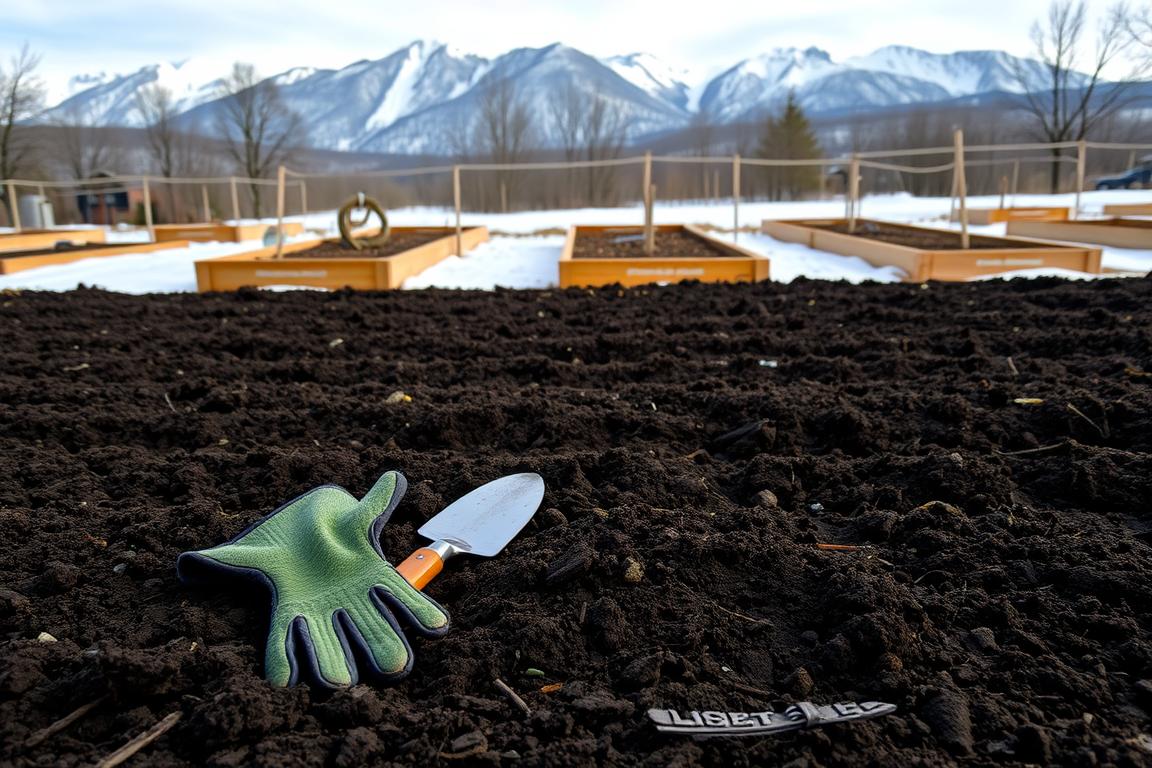Start a vegetable garden from scratch and begin an exciting journey. This guide is packed with tips. You’ll learn how to pick the best vegetables to grow, get your garden soil ready, and plant seeds. We’re also sharing a starter garden plan. It includes easy-to-grow vegetables, companion planting techniques, and beautiful flowers.
Make this year the time you grow a successful garden!
Key Takeaways
- Discover the joy and benefits of starting a vegetable garden from the ground up.
- Learn how to select the perfect location, prepare the soil, and plan your garden layout.
- Explore a variety of easy-to-grow vegetables that are perfect for beginner gardeners.
- Understand the importance of companion planting and crop rotation for a thriving garden.
- Uncover watering and maintenance techniques to ensure your garden’s success.
Why Start a Vegetable Garden?
Have you ever thought about making a backyard vegetable garden? It’s not just a fun hobby. It’s rewarding and saves money. You’ll always have fresh, organic vegetables to enjoy at home.
Enjoy Fresh, Nutritious Produce
Tasting garden-fresh vegetables is amazing. It’s better than store-bought, packed with flavor. And you know it’s healthy for you and your family. That’s the beauty of a home vegetable garden.
Cost-Effective and Rewarding Hobby
Vegetable gardening helps cut grocery costs. It’s also a rewarding part of homesteading. Imagine a garden full of your favorite veggies. It reduces trips to the store and brings pride in growing your own food.
Choosing the Right Location
Choosing the right spot for your vegetable garden is vital. A poor spot means your veggies might not grow as well. Here are some essential tips:
Sunny Spot
Most vegetables need 6-8 hours of sun each day. Pick a place that’s sunny, preferably facing south or west. Too much shade can slow down plant growth and lower your harvest.
Well-Drained Soil
The best garden soil is full of nutrients and drains well. Don’t pick a low spot that collects water, though. Wet soil can harm your plants. Test your soil and add compost if it needs better drainage and fertility.
Stable and Wind-Protected Area
Choose a spot that’s not too windy. Strong winds can hurt your plants. Putting your vegetable garden near a fence or building can shield it from wind. Avoid open areas that get hit by bad gusts.
| Ideal Vegetable Garden Conditions | Ideal Characteristics |
|---|---|
| Sunlight | 6-8 hours of direct sunlight per day |
| Soil | Nutrient-rich, well-draining |
| Wind Protection | Sheltered from strong gusts |
Determining the Garden Size
When you plan your garden layout, think about the size. Choose what works for your needs and space. Starting with a smaller plan that you can easily take care of is wise. You’d rather enjoy a small garden than struggle with a big one.
To pick the right garden size, look at your space, family size, and experience. A small, manageable size, like a 4×8 or 6×8 area, is a good start. It lets you try different layouts and plants without it being too hard.
Over time, you can make your garden bigger as you learn more and feel more confident. But, always consider how much time and effort you can put in. Balancing your love for gardening with what you can actually do is key.
Selecting Vegetables to Grow
Starting a vegetable garden means choosing the right vegetable seeds. As a beginner, stick to easy vegetables to grow that do well where you live. Think about what your family likes and what grows best in your region. This ensures a great harvest.
Easy Vegetables for Beginners
Tomatoes, zucchini, beans, lettuce, carrots, and herbs like basil and mint are great for new gardeners. These what to plant in a vegetable garden options grow quickly and need little care. They also give good harvests. Placing their seeds right in the soil is easy.
Considering Family Preferences
Think about what your family enjoys when choosing vegetables to grow. This ensures you use what you grow. Look for regional vegetable varieties that match your family’s taste. This can make your gardening more satisfying.
Choosing Varieties Suitable for Your Region
Each type of vegetable seeds likes different weather and soil. Choose seeds that are known to fight disease or are right for your region. This helps your garden grow well and you get more veggies.
“How to Start a Vegetable Garden from Scratch”
First, prep the soil well. Mix in compost or aged manure to make it rich in nutrients. Good soil is key for your vegetable plants to grow strong and healthy.
When you’re ready to plant, read the seeds or seedlings label. Some, like lettuce and radishes, you can plant right in the soil. But for tomatoes and peppers, start them indoors first.
Make sure your vegetable plants have enough space. This prevents them from getting too crowded and lets each one get the light, water, and nutrients they need.
Garden Planning and Layout
When you plan your garden layout, think about using companion planting and crop rotation. These techniques help make your vegetable garden more productive. You can also use garden planning tools to make the process easier and create a pretty design.
Companion Planting
Companion planting puts plants together that help each other. It can stop pests, make the soil better, and make your garden stronger. For instance, marigolds next to tomatoes can keep away harmful worms. Placing basil by tomatoes can make them tastier.
Crop Rotation
With crop rotation, you plant different things in the same spot over time. This keeps the soil fertile, lowers the risk of pests and diseases, and stops nutrients from running out. Doing this keeps your garden healthy and full of life every year.
Garden Planning Tools
A lot of garden planning tools can help you see and plan your garden layout. These tools can be simple or very advanced. Using them, you can try out various garden planning ideas, figure out the best plant distances, and create a beautiful garden layout.
Watering and Maintenance
Keeping your vegetable garden well-watered and maintained is very important. Your plants should get 1 to 2 inches of water each week. This can be from rain or by watering them. It’s vital to keep the moisture at a steady level. Too much or too little water can damage your garden. This can cause plants to wilt, get sick, or grow poorly.
Irrigation Methods
You might want to think about using a drip irrigation system or soaker hoses. They both water plants right at the root. This helps to avoid water loss by evaporation. If you prefer, you can also water by hand with a hose or a watering can. Just make sure not to water the leaves. Moisture on leaves can start fungal diseases.
Fertilizing
Keeping a regular vegetable garden fertilizer schedule is crucial. Choose a balanced, organic fertilizer. Always read the instructions on how to use it. Adding compost or manure can also help your plants get the nutrients they need.
Pest and Disease Control
Paying close attention to pests and diseases is essential. Regularly check your plants for any signs of harm. Look for bugs, changes in color, or wilted leaves. If you notice a problem, act quickly. Use eco-friendly methods like planting certain flowers or herbs to keep pests away. You can also pick off bugs by hand or use natural bug killers.
FAQ
How do I start a vegetable garden from scratch?
Start a vegetable garden by picking a sunny spot with good soil. Prepare the soil by adding the right things, and then it’s time to plant. Keep your plants watered and cared for.
What are some easy vegetables for beginners to grow?
For beginners, simple vegetables are tomatoes, zucchini, and carrots. They’re easy to grow and usually do well.
How do I determine the right size for my vegetable garden?
Deciding your garden size is about how much space you have and who you are feeding. You can start small and grow your space over time.
What are the benefits of starting a vegetable garden?
Gardening gives you fresh food, saves you money, and is a fun way to spend time. Fresh veggies from your garden taste better too.
How do I choose the right location for my vegetable garden?
Choose a sunny, sheltered spot with good soil for your garden. It should also be easy to water your plants.
How do I plan and layout my vegetable garden?
Think about which plants grow well together and what each needs. You can use tools to help plan your garden’s design.
How do I maintain and care for my vegetable garden?
Keep your garden watered and fed. Control pests by using the right methods. Following these steps will help your garden grow strong.








